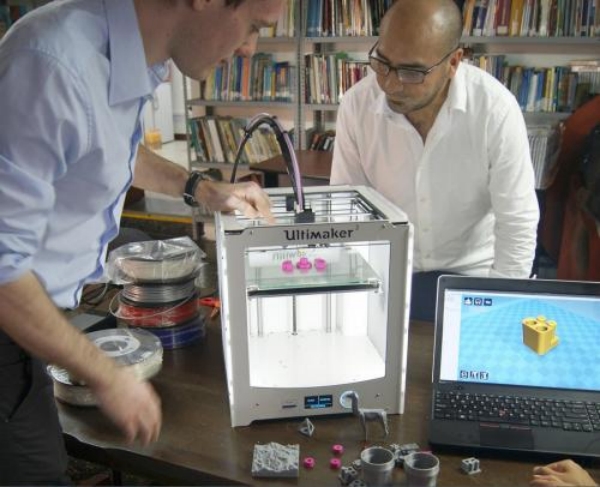The leapfrogging value of Digital DIY
What is a “developing economy” anyway?
Four years ago, as a member of the EU/H2020 research project on Digital DIY (DiDIY) I came across some thoughts about “developing economies” that are still VERY relevant:

“Before the mobile phone, developed economies had invested large amounts of money in land-line infrastructure. However, developing economies are able to effectively skip the landline, which, after all, would have been prohibitively expensive in poor communities due to vast distances and low population density."
“The popularity of mobile technology, its ability to increase levels of income, and the rapid adoption demonstrates the real opportunity for 3D printing as the technology development curve is not dissimilar to that of mobile communication. Furthermore, this lack of infrastructure and limited logistics provides a huge opportunity for 3D printers as it could mean rural villages would be able to print their own products or agriculture tools and not have to rely on unreliable supply chains. The advancement in mobile communication and the internet continues to support this technology allowing for the rapid transfer of data between sites.
For engineers, this development could enable greater access to these markets through online communities (which are already beginning to form) and enable end users to join the design process, creating more effective product solutions to meet their needs."
WHY is all this “VERY” relevant TODAY?
Because “Developing economies” or “low income areas” are everywhere.. including inside the European Union. Especially now (*) that COVID19 is reducing the economy of the whole continent to a disaster area, that will need rebuilding with new, more resilient ideas and practices.
This is why the “leapfrogging value” of Digital DIY, as described here, is relevant for Europe today, much more than it already was in 2016.
(*) This updated version of a blog post I wrote for the DiDIY project was prepared in March 2020 but only put online in August, due to… my Coronavirus reports, of course
Who writes this, why, and how to help
I am Marco Fioretti, tech writer and aspiring polymath doing human-digital research and popularization.
I do it because YOUR civil rights and the quality of YOUR life depend every year more on how software is used AROUND you.
To this end, I have already shared more than a million words on this blog, without any paywall or user tracking, and am sharing the next million through a newsletter, also without any paywall.
The more direct support I get, the more I can continue to inform for free parents, teachers, decision makers, and everybody else who should know more stuff like this. You can support me with paid subscriptions to my newsletter, donations via PayPal (mfioretti@nexaima.net) or LiberaPay, or in any of the other ways listed here.THANKS for your support!